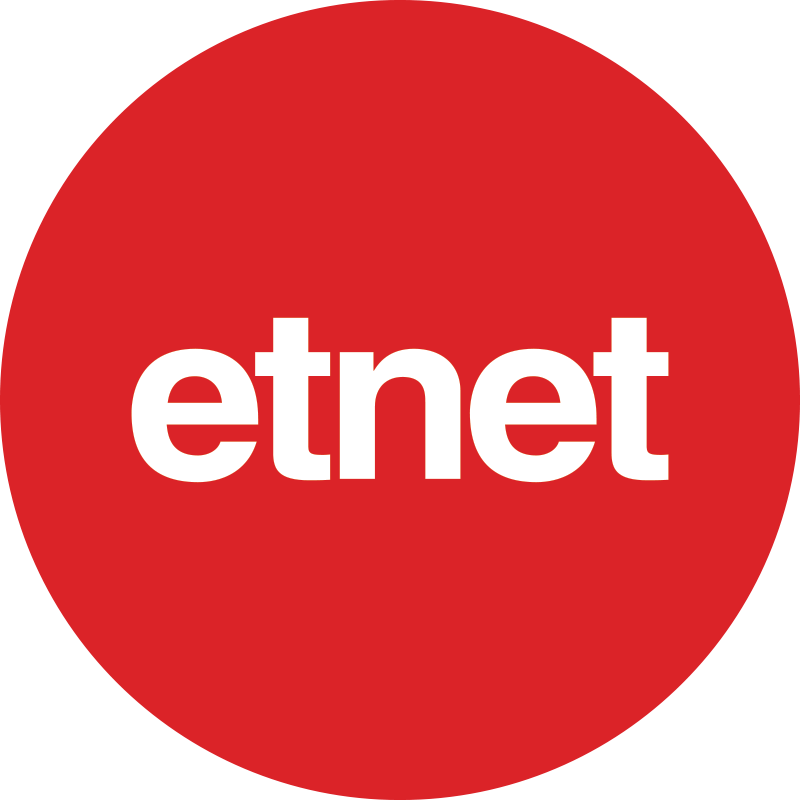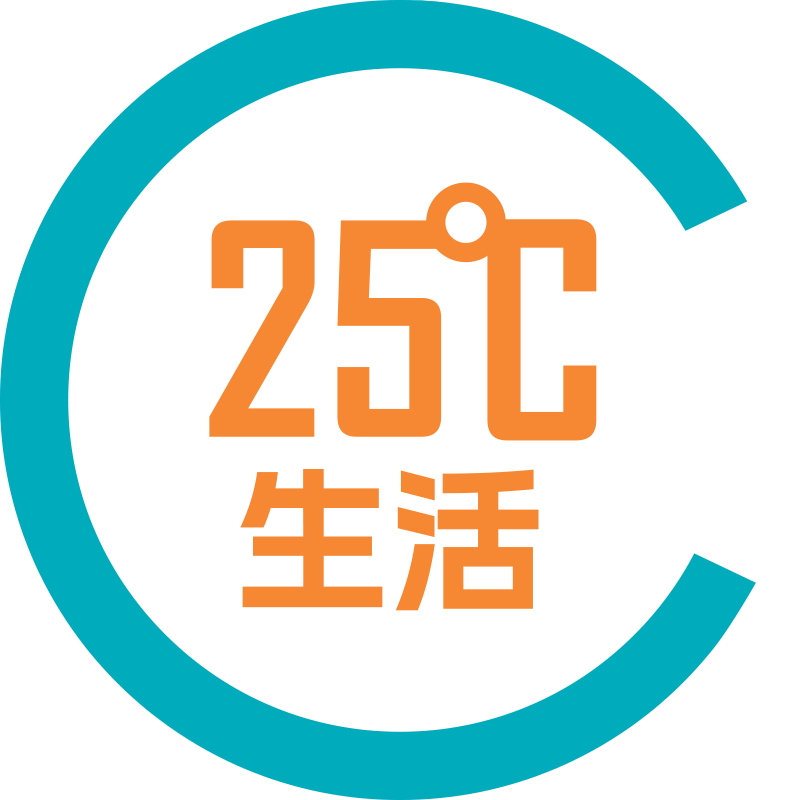 |
ROCKVILLE, Md. and SUZHOU, China, Nov. 6, 2024 /PRNewswire/ -- Ascentage Pharma (6855.HK), a global biopharmaceutical company engaged in discovering, developing, and commercializing therapies to address global unmet medical needs primarily for malignancies, today announced that the latest results from three clinical studies of one of the company's key drug candidate, lisaftoclax (APG-2575), have been selected for presentations, including an Oral Report, at the 66th American Society of Hematology (ASH) Annual Meeting. This is the third consecutive year in which clinical results on lisaftoclax have been selected by the ASH Annual Meeting. In 2024, results from multiple clinical and preclinical studies on four of the company's investigational drug candidates (olverembatinib, lisaftoclax, APG-2449, and APG-5918) have been selected for presentations, including two Oral Reports, at the ASH Annual Meeting.
Developed by Ascentage Pharma, lisaftoclax is a novel orally available Bcl-2 inhibitor with clinical benefits for an array of hematologic malignancies and solid tumors. At this year's ASH Annual Meeting, Ascentage Pharma will present an Oral Report featuring the latest results from a Phase I/II study of lisaftoclax in patients with relapsed/refractory multiple myeloma (R/R MM) or immunoglobulin light-chain (AL) amyloidosis. Furthermore, the latest data of lisaftoclax combinations in chronic lymphocytic leukemia/small lymphocytic lymphoma (CLL/SLL) and myelodysplastic syndrome (MDS) will also be released in Poster Presentations at the meeting.
The ASH Annual Meeting is one of the largest gatherings of the international hematology community, aggregating the latest scientific research in the pathogenesis and clinical treatment of hematologic diseases. The 66th ASH Annual Meeting will take place on December 7-10, 2024, local time, both online and in-person in San Diego, CA (United States).
"Lisaftoclax is the first Bcl-2 inhibitor in China and the second globally that has demonstrated clinical benefits and entered pivotal registrational studies," said Dr. Yifan Zhai, Chief Medical Officer of Ascentage Pharma. "Currently, the drug candidate is being evaluated in four registrational Phase III studies. For the clinical results of lisaftoclax to be once again selected by the ASH meeting, it underscores the clinical benefit of this drug in hematologic malignancies. Furthermore, multiple studies of four of our investigational drug candidates have been selected for presentations at the meeting this year, highlighting Ascentage Pharma's robust capabilities in global innovation and investigational clinical development. We are eager to share detailed data at the event. Moving forward, we will continue to accelerate our clinical development programs in efforts to bring more treatment options to patients as soon as possible."
An overview of presentations featuring Ascentage Pharma's drug candidates at ASH 2024:
Format | Drug Candidate | Abstract title | Abstract# |
Oral Presentation | Olverembatinib (HQP1351) | Olverembatinib as Second-Line (2L) Therapy in Patients (pts) with Chronic Phase-Chronic Myeloid Leukemia (CP-CML) | 480 |
Lisaftoclax (APG-2575) | Lisaftoclax (APG-2575) Combined with Novel Therapeutic Regimens in Patients (pts) with Relapsed or Refractory Multiple Myeloma (R/R MM) or Immunoglobulin Light-Chain (AL) Amyloidosis | 1022 | |
Poster Presentation | Olverembatinib (HQP1351) | Olverembatinib (HQP1351) Overcomes Resistance/Intolerance to Asciminib and Ponatinib in Patients (pts) with Heavily Pretreated Chronic-Phase Chronic Myeloid Leukemia (CP CML): A 1.5-Year Follow-up Update with Comprehensive Exposure-Response (E-R) Analyses | 3151 |
Lisaftoclax (APG-2575) | Lisaftoclax (APG-2575) Demonstrates Activity and Safety When Given with Accelerated Ramp-up and then Combined with Acalabrutinib or Rituximab in Patients (pts) with Chronic Lymphocytic Leukemia/Small Lymphocytic Lymphoma (CLL/SLL), Including Those with Prior Exposure to Venetoclax | 4614 | |
Lisaftoclax (APG-2575) | Lisaftoclax (APG-2575), a Novel BCL-2 Inhibitor, in Combination with Azacitidine in Treatment of Patients with Myelodysplastic Syndrome (MDS) | 3202 | |
Olverembatinib + Lisaftoclax | Safety and Efficacy of Olverembatinib (HQP1351) Combined with Lisaftoclax (APG-2575) in Children and Adolescents with Relapsed/Refractory Philadelphia Chromosome–Positive Acute Lymphoblastic Leukemia (R/R Ph+ ALL): First Report from a Phase 1 Study | 1443 | |
Olverembatinib (HQP1351) | A Phase 2 Study of Olverembatinib for the Treatment of Myeloid/Lymphoid Neoplasms with FGFR1 Rearrangement | 1781 | |
Olverembatinib (HQP1351) | Olverembatinib 30 Mg Versus 40 Mg Every Other Day (QOD) in Patients with Tyrosine Kinase Inhibitor (TKI) Resistant or Intolerant Chronic-Phase Chronic Myeloid Leukemia (CML-CP): A Multi-Center Propensity Score-Matched Analysis | 4529 | |
Olverembatinib (HQP1351) | Combination of Olverembatinib and VP Regimen for Newly Diagnosed Adult Philadelphia Chromosome-Positive Acute Lymphoblastic Leukemia | 1449 | |
Olverembatinib (HQP1351) | Olverembatinib-Therapy in Patients with Accelerated-Phase Chronic Myeloid Leukaemia: A Multi-Centre Retrospective Study from China | 1767 | |
Olverembatinib (HQP1351) | Olverembatinib-Based Therapy in Patients with Philadelphia Chromosome-Positive Acute Leukemia: A Multi-Centre Retrospective Study from China | 4528 | |
Lisaftoclax + APG-2449 | APG-2449, a Novel Focal Adhesion Kinase (FAK) Inhibitor, Exhibits Antileukemic Activity and Enhances Lisaftoclax (APG-2575)-Induced Apoptosis in Acute Myeloid Leukemia (AML) | 4150 | |
APG-5918 | Embryonic Ectoderm Development (EED) Inhibitor APG-5918 Demonstrates Robust Antitumor Activity in Preclinical Models of T-Cell Lymphomas (TCLs) | 1415 | |
Abstract only | Olverembatinib + Lisaftoclax | Olverembatinib (HQP1351) in Combination with Lisaftoclax Overcomes Venetoclax Resistance in Preclinical Model of Acute Myeloid Leukemia (AML) | 5777 |
Abstracts on lisaftoclax selected for presentations at the 2024 ASH Annual Meeting are as follows: (for details on the abstracts featuring olverembatinib, please refer to a separate press release published at the same time)
Oral Presentation
Lisaftoclax (APG-2575) Combined with Novel Therapeutic Regimens in Patients (pts) with Relapsed or Refractory Multiple Myeloma (R/R MM) or Immunoglobulin Light- Chain (AL) Amyloidosis
Format: Oral Presentation
Abstract#: 1022
Session: 654. Multiple Myeloma: Pharmacologic Therapies: Into the Future: New Drugs and Combinations in Multiple Myeloma
Time: Monday, December 9, 2024, 4:45 PM
First Author: Dr. Sikander Ailawadhi, Mayo Clinic, Jacksonville, FL
Highlights:
Background:
- MM is characterized by the proliferation of abnormal clonal plasma cells, causing destructive bone lesions, kidney injury, anemia, and hypercalcemia. The treatment of MM involves immunomodulatory agents, proteasome inhibitors, and anti-CD38 monoclonal antibodies to achieve disease remission.
- AL amyloidosis comprises disorders of abnormal extracellular deposition of misfolded proteins in various organs with resultant damage, and the key strategy of treatment is to prolong the time to or reverse organ dysfunction. However, many patients will relapse from the standard triplet or quadruplet therapies, necessitating additional treatments with novel mechanisms of action.
- Lisaftoclax is a novel investigational Bcl-2 inhibitor that has shown strong antitumor activity in earlier studies. This presentation reports clinical trial data on lisaftoclax combined with novel therapeutic regimens in patients with R/R MM or R/R AL amyloidosis.
Introduction: This is a multicenter, open-label Phase I/II study.
Enrolled Patients and Study Methods:
- Eligible patients had an ECOG performance status ≤ 2, ≥ 1 prior line of therapy, and adequate organ function. Patients with R/R AL amyloidosis had confirmed symptomatic organ involvement. Lisaftoclax was administered orally daily in repeated 28-day cycles. Pomalidomide, daratumumab, and lenalidomide were administered per label use. Dexamethasone 40 mg (20 mg, patients > 75 years old) was administered on days 1, 8, 15, and 22 of 28-day cycles.
- This study evaluated the safety and efficacy of lisaftoclax combined with pomalidomide and dexamethasone (Pd; Arm A) or daratumumab, lenalidomide, and dexamethasone (DRd; Arm B) in R/R MM, and lisaftoclax combined with the Pd regimen in R/R AL amyloidosis (Arm C).
- As of May 29, 2024, 52 patients were enrolled, including 42 with R/R MM and 10 with AL amyloidosis. The median (range) age of all patients was 69.5 (24-88) years, of whom 63.5% were male and 63.5% were ≥ 65 years of age. The enrolled patients were heavily pretreated, with a median (range) number of prior therapy lines of 3 (1-19).
- In Arm A (n=35), lisaftoclax was administered orally at dose assigned: 400 mg (n=3); 600 mg (n=4); 800 mg (n=15); 1,000 mg (n=7); and 1,200 mg (n=6). In Arm B (n=7), all patients were treated with lisaftoclax 600 mg. In Arm C (n=10), lisaftoclax was administered at 400 mg (n=1); 600 mg (n=4); 800 mg (n=3); and 1,000 mg (n=2).
Efficacy Results:
- In Arm A, out of 31 evaluable patients, 3 (9.7%) achieved complete remission (CR), 7 (22.6%) reached very good partial remission (VGPR), and 9 (29.0%) achieved partial response (PR). The overall response rate (ORR) was 61.3% (n=19), and 10 (32.3%) achieved≥VGPR.
- In Arm B, of 4 evaluable patients, 2 (50%) achieved CR and 2 (50%) achieved ≥ VGPR.
- In Arm C, of 7 assessed patients, 1 (14.3%) achieved CR, 4 (57.1%) achieved VGPR, 1 (14.3%) achieved PR, and 5 (71.4%) achieved ≥ VGPR, for an ORR of 6 (85.7%); 2 patients had cardiac responses.
Safety Results: Among 49 patients in the safety population, 34 (69.4%) reported any-grade lisaftoclax treatment-related AEs (TRAEs; ≥ 5% incidence), including neutropenia (20.4%), thrombocytopenia (6.1%), leukopenia (10.2%), nausea (16.3%), abdominal distension (10.2%), diarrhea (12.2%), and constipation (8.2%). A total of 11 patients experienced grade ≥ 3 TRAEs, including neutropenia (14.3%) and febrile neutropenia (2%), and 3 patients experienced lisaftoclax-related serious AEs (1 each): febrile neutropenia, acute kidney injury, and diarrhea with electrolyte imbalance. In Arm B, 1 pt experienced a dose-limiting toxicity (prolonged QT interval). Pharmacokinetic analyses showed no drug-drug interaction (DDI) in all patients treated with lisaftoclax at all doses in combination with other therapeutic agents used in 3 arms.
Conclusions: These findings suggest that lisaftoclax improves the depth of response in patients with R/R MM or AL amyloidosis when combined with Pd or DRd. These combination therapies demonstrated a favorable safety profile with no DDIs, particularly in hematologic side effects.
Poster Presentations
Lisaftoclax (APG-2575) Demonstrates Activity and Safety When Given With Accelerated Ramp-up and Then Combined With Acalabrutinib or Rituximab in Patients (pts) With Chronic Lymphocytic Leukemia/Small Lymphocytic Lymphoma (CLL/SLL), Including Those With Prior Exposure to Venetoclax
Format: Poster Presentation
Abstract#: 4614
Session: 642. Chronic Lymphocytic Leukemia: Clinical and Epidemiological: Poster III
Time: Monday, December 9, 2024; 6:00 PM - 8:00 PM
First Author: Dr. Matthew Davids, Department of Medical Oncology, Dana-Farber Cancer Institute, Boston, MA
Highlights:
Background: Bcl-2 inhibition with venetoclax (ven) was a major advance in CLL treatment, but the 5-week dose ramp-up to mitigate the risk of tumor lysis syndrome (TLS) and DDIs challenge treatment optimization. Lisaftoclax is an investigational, oral Bcl-2i with a short half-life, allowing it to be ramped-up on a daily schedule.
Introduction: This poster presents updated clinical data of lisaftoclax alone or combined with acalabrutinib or rituximab in patients with treatment-naïve (TN; lisaftoclax-acalabrutinib arm), relapsed/refractory, or prior ven-treated CLL/SLL.
Enrolled Patients and Study Methods:
- From March 20, 2020, to June 27, 2024, 176 patients were enrolled: 46 in monotherapy and 39 and 91 in the rituximab and acalabrutinib combination cohorts, respectively; 87.5% (154/176) of patients were R/R and 12.5% (22/176) were TN. The median (range) age was 63 (34-80) years; 67% were male; 25.6% had del(17p) and/or TP53 mutation; and 70.6% had unmutated IGHV.
- Median (range) duration of treatment with lisaftoclax was 16.5 (1-54; monotherapy), 24 (3-39; rituximab), and 27 (1-43; acalabrutinib) months. In R/R patients, the median (range) number of prior lines of therapy was 2 (1-15), and 14 (9%) patients had been treated with ven. Patients who had received prior treatment with ven had a median (range) age of 65 (51-78); and 79% were male.
- Of evaluable patients, 50% had del(17p), 36% had TP53 mut, 64% had del(11q), 38% had complex karyotype (≥ 3 abnormalities), and 92% had unmutated IGHV; 57% were BTKi naïve; and the median (range) number of prior therapies was 3 (1-6).
- Patients were treated with a rapid 4- to 6-day daily ramp-up of lisaftoclax from 20 mg to a target dose of 400, 600, or 800 mg, receiving daily oral lisaftoclax alone or, plus continuous acalabrutinib or 6 cycles of rituximab in 28-day cycles, starting on Cycle 1 Day 8 (C1D8) until disease progression, complete response by C24, or unacceptable toxicity. Blood samples were collected for pharmacokinetic (PK) and exposure-response (E-R) analyses.
Efficacy Results:
The ORR for lisaftoclax plus acalabrutinib in 87 patients was 96.6%, and the median duration of response (DOR; 95% CI, 23-NR) and median progression-free survival (PFS; 95% CI, 34-NR) were not reached. The 12- and 18-month PFS rates were 89% and 86%, respectively.
Fourteen R/R CLL ven-exposed patients received lisaftoclax plus acalabrutinib:
- of whom 9 had progressed on ven, 3 relapsed after completing ven, and 2 discontinued due to ven intolerance. Median (range) duration of treatment was 16 (3-25) months. Safety profile was similar to that of other study cohorts.
- ORR was 85.7% (12/14) in the ven-exposed patients;
- ORR was 100% (8/8) in the ven-exposed but BTKi-naïve patients;
- ORR was 66.7% (4/6) in the ven- and BTKi-exposed patients;
- The median DOR and PFS were not reached. The 12- and 18-month PFS rates were 84% and 73%, respectively.
Safety Results:
- Incidence and severity of TEAEs were similar across cohorts.
- Common (>10%) any-grade TEAEs in all cohorts combined were neutropenia (59 [33.5%]), diarrhea (38 [21.6%]), anemia (27 [15.3%]), and thrombocytopenia (26 [14.8%]). Grade ≥ 3 treatment-emergent AEs (TEAEs) were neutropenia in 15 (32.6%), 10 (25.6%), and 22 (24%) patients and anemia in 10 (21.7%), 5 (12.8%), and 12 (13.2%) patients in monotherapy, rituximab, and acalabrutinib combination cohorts, respectively. Comprehensive E-R analyses indicated that lisaftoclax had similar systemic exposure as monotherapy or when combined with acalabrutinib or rituximab; lisaftoclax had no DDI when combined with acalabrutinib or rituximab.
- No discontinuations were attributed to lisaftoclax TRAEs. Forty-four (95.7%) patients in monotherapy discontinued treatment. Most discontinuations were due to progressive disease (n = 41 [23.3%]) and AEs (n = 13 [7.4%]); 9 (5.1%) patients withdrew consent; 7 (4%) achieved complete response or MRD negativity after ≥ 24 cycles; 5 (2.8%) died; and 18 (10.2%) discontinued for other reasons. Clinical (n = 2) and laboratory (n = 3) TLS was observed in 5 (2.8%) patients on lisaftoclax (by Howard/Cairo-Bishop criteria), with cases rapidly resolving to resume lisaftoclax safely.
Conclusions: The presented data suggest that lisaftoclax combined with acalabrutinib is effective for patients with prior ven exposure, including those with progression on ven. In this updated analysis with longer follow-up, no DDIs or new safety findings were observed in TN or R/R CLL/SLL patients treated with lisaftoclax monotherapy or combinations. Patients with prior ven exposure continue to be accrued in order to further evaluate this promising signal. A global registrational phase III study is recruiting.
Lisaftoclax (APG-2575), a Novel BCL-2 Inhibitor, in Combination with Azacitidine in Treatment of Patients with Myelodysplastic Syndrome (MDS)
Format: Poster Presentation
Abstract#: 3202
Session: 637. Myelodysplastic Syndromes: Clinical and Epidemiological: Poster II
Time: Sunday, December 8, 2024, 6:00 PM - 8:00 PM
First Author: Prof. Huafeng Wang, The First Affiliated Hospital, Zhejiang University School of Medicine, Hangzhou, China
Highlights:
Background: Hypomethylating agents (HMAs) remain the standard of care in higher-risk MDS. However, its clinical efficacy is limited, and patients who have failed or are resistant to HMAs have a poor prognosis, leaving them in need of new therapeutic options.
Introduction: Preclinical data have shown that novel investigational Bcl-2 inhibitor lisaftoclax combined with an HMA can synergistically induce apoptosis in cancer cells in AML and MDS. Reported here are the follow-up safety and efficacy data from a Phase Ib/II clinical trial evaluating lisaftoclax combined with azacitidine in adults (≥18 years) with MDS.
Enrolled Patients and Study Methods:
- This study enrolled patients with higher-risk MDS (IPSS-R score > 3.5; blasts > 5%), including those with TN or R/R disease. Lisaftoclax at an assigned dose (400, 600, or 800 mg) was administered orally once daily from Days 1 to 14 and combined with azacitidine (75 mg/m2/day) on Days 1 to 7 in repeated 28-day cycles. A daily ramp-up was used before the first cycle to prevent TLS. The primary objectives of the study were to assess the efficacy and safety of the combination regimen in patients with MDS and establish the recommended Phase III dose for lisaftoclax. Complete response (CR) and marrow CR (mCR) rates were evaluated in accordance with 2006 International Working Group (IWG) criteria.
- As of July 1, 2024, 49 patients were enrolled: 8 had R/R MDS (lisaftoclax 600 mg [n=5] and 800 mg [n=3]) and 41 had TN MDS (lisaftoclax 400 mg [n=16], 600 mg [n=23], and 800 mg [n=2]). The median (range) age was 66 (22-83) years, and 55.1% of patients were male. IPSS-R risk categories were intermediate (12/49 [24.5%]), high (24/49 [49.0%]), and very high (13/49 [26.5%]). Among the 39 patients with genetic mutational profile data, 9 (23.1%) had TP53 mutations; 11 (28.2%) had TET2 mutations; 10 (25.6%) had ASXL1 mutations; and 10 (25.6%) had RUNX1 mutations. At baseline, 70.8% of patients reported grade ≥ 3 anemia; 54.2% had grade ≥ 3 neutropenia; and 45.8% had grade ≥ 3 thrombocytopenia.
Efficacy Results: Lisaftoclax dose reduction occurred in 4 (8.2%) patients. Neither 60-day mortality nor TLS was reported. In 8 patients with R/R MDS, the median (range) duration of treatment (DOT) was 3.2 (1.2-9.4) months. The overall response rate (ORR=CR[12.5%]+marrow CR[62.5%]) was 75.0% (95% CI, 34.9-96.8). In 40 efficacy-evaluable patients with TN MDS, the median DOT (range) was 4.5 (0.5-12.1) months; the ORR was 77.5% (95% CI, 61.5-89.2); and the CR rate was 25.0% per IWG 2006 criteria. Furthermore, the ORR and CR rate in 23 patients with TN MDS treated with lisaftoclax 600 mg combined with azacitidine were 73.9% and 30.4%, respectively; because these patients had a relatively longer median DOT (6.01 months), we conducted further analyses per IWG 2023 criteria. The composite CR rate (CR2023 = CR [52.2%] + CRL [17.4%]) was 69.6%, and the median time to CR (range) was 2.84 (1.1-8.7) months. Both the median progression-free survival and overall survival rates were not reached.
Safety Results:
- All patients treated with lisaftoclax combined with azacitidine reported TEAEs. Of these, 93.8% were grade ≥ 3 AEs and 35.4% were serious AEs. Common grade ≥ 3 nonhematologic TEAEs (≥ 10% incidence) included pneumonia (24.4%) and hypokalemia (10.2%). Common grade ≥ 3 hematologic TEAEs included leukocyte count decreased (75.5%), neutropenia (69.4%), thrombocytopenia (65.3%), anemia (24.5%), and febrile neutropenia (18.4%).
- Grade ≥ 3 infections were reported in 46.9% of patients, of which 26.5% were treatment related. Treatment delays between cycles due to AEs occurred in 11 (22.4%) patients, with a median delay time (range) of 12 (1-63) days.
- A total of 95.9% of patients reported TRAEs, of which 87.8% were grade ≥ 3 AEs and 28.6% were serious AEs. Common grade ≥ 3 hematologic TRAEs included leukocyte count decreased (71.4%), neutropenia (65.3%), thrombocytopenia (65.3%), anemia (20.4%), and febrile neutropenia (12.2%).
Conclusions: The clinical data support an emerging role for lisaftoclax in combination with azacitidine for treatment of patients with higher-risk TN or R/R MDS. The combination therapy was efficacious and well tolerated, resulting in no 60-day mortality, few dose modifications, and low infection rates, supporting further clinical development of this combination in patients with higher-risk MDS.
* Olverembatinib is an investigational drug that has not been approved for any indication outside China; lisaftoclax (APG-2575), APG-2449 and APG-5918 are investigational drugs that have not been approved in any country and region.
About Ascentage Pharma
Ascentage Pharma (6855.HK) is a global, integrated biopharmaceutical company engaged in discovering, developing and commercializing therapies to address global unmet medical needs primarily in malignancies. On October 28, 2019, Ascentage Pharma was listed on the Main Board of the Stock Exchange of Hong Kong Limited with the stock code 6855.HK.
The company has built a rich pipeline of innovative drug candidates that includes novel, highly potent Bcl-2 and dual Bcl-2/Bcl-xL inhibitors, as well as candidates aimed at IAP and MDM2-p53 pathways, and next-generation TKIs. Ascentage Pharma is also the only company in the world with active clinical programs targeting all three known classes of key apoptosis regulators. The company has conducted more than 40 clinical trials in the US, Australia, Europe, and China, including 13 registrational studies (completed/ ongoing/planned).
Olverembatinib, the company's first lead asset developed for the treatment of drug-resistant chronic myeloid leukemia (CML) and the company's first approved product in China, has been granted Priority Review Designations and Breakthrough Therapy Designations by the Center for Drug Evaluation (CDE) of China National Medical Products Administration (NMPA). To date, the drug had been included into the China National Reimbursement Drug List (NRDL). Furthermore, olverembatinib has been granted Orphan Drug Designations (ODDs) and a Fast Track Designation (FTD) by the US FDA, and an Orphan Designation by the EMA of the EU.
To date, Ascentage Pharma has obtained a total of 16 ODDs from the US FDA and 1 Orphan Designation from the EMA of the EU for 4 of the company's investigational drug candidates. Leveraging its robust R&D capabilities, Ascentage Pharma has built a portfolio of global intellectual property rights and entered into global partnerships and other relationships with numerous leading biotechnology and pharmaceutical companies such as Takeda, AstraZeneca, Merck, Pfizer and Innovent; and research and development relationships with leading research institutions such as Dana-Farber Cancer Institute, Mayo Clinic, MD Anderson Cancer Center, National Cancer Institute and the University of Michigan.
The company has built a talented team with a wealth of global experience in the discovery and development of innovative drugs and fully functional commercial manufacturing and Sales & Marketing teams. One pivotal aim of Ascentage Pharma is to continuously strengthen its R&D capabilities and accelerate its clinical development programs, in order to fulfil its mission of addressing unmet clinical needs in China and around the world for the benefit of more patients.
Forward-Looking Statements
The forward-looking statements made in this article relate only to the events or information as of the date on which the statements are made in this article. Except as required by law, Ascentage Pharma undertakes no obligation to update or revise publicly any forward-looking statements, whether as a result of new information, future events, or otherwise, after the date on which the statements are made or to reflect the occurrence of unanticipated events. You should read this article completely and with the understanding that our actual future results or performance may be materially different from what we expect. In this article, statements of, or references to, our intentions and expectations or those of any of our Directors or our Company are made as of the date of this article. Any of these intentions and expectations may alter in light of future development.
source: Ascentage Pharma
【香港好去處】etnet全新頻道盛大推出!全港最齊盛事活動資訊盡在掌握!► 即睇































